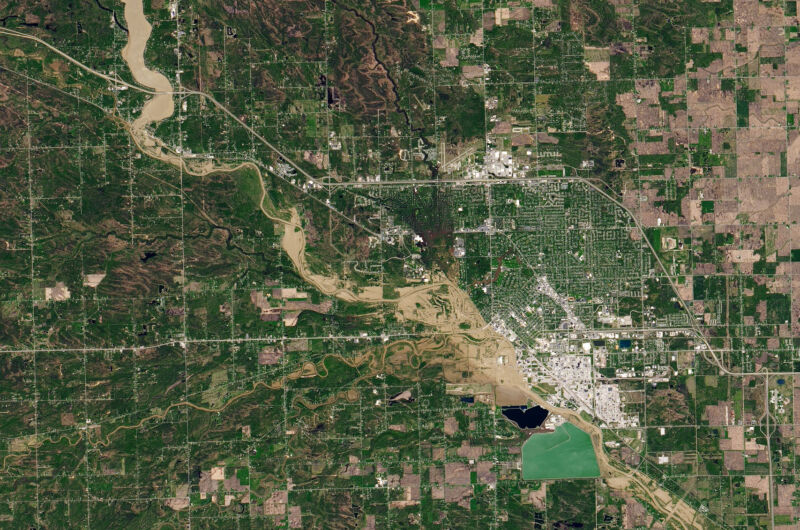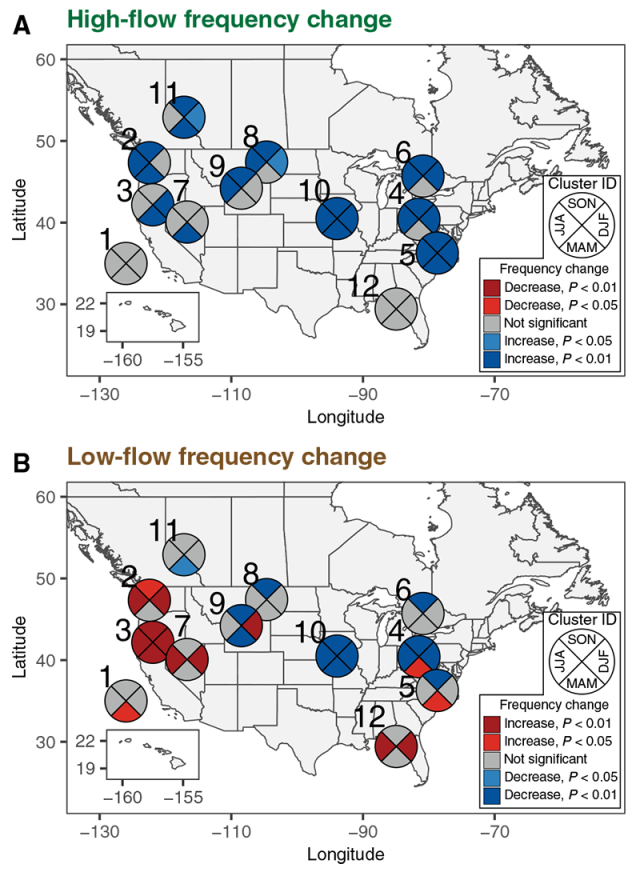Real streams don’t buffer —
Mixed trends become clearer when similar streams are grouped together.
Scott K. Johnson
–

Enlarge / Flooding in Midland, Michigan, in May 2020 after heavy rains caused the failure of two dams.
Climate change involves direct consequences on the cycling of water through our environment. The warmer atmosphere holds more moisture, making intense rainstorms dump even more water than they used to. On the flip side, warmer air can suck even more moisture out of the ground through evaporation, worsening droughts. These things should obviously result in changes for streams. But the amount of water in streams varies wildly under normal conditions, and it can also be affected by more than just weather. Finding trends in that data has proven difficult.
A new study led by Evan Dethier at Dartmouth College set out to group streams into physically meaningful categories, to see if consistent patterns emerge once apples are separated from oranges. That analysis does reveal some trends—both in extremes of high flow and low flow.
Going with the flow
Many efforts have found mixed trends between streams when analyzing records of peak annual flows, where records tend to go back farther than constant measurements. Attempts to look for regional patterns have largely relied on grouping by arbitrary boxes or political boundaries, which only have a limited connection to the landscape.
The new research included about 540 streamflow stations in the US and Canada, all from locations that have little human impact and that have at least 60 years of data. To put the stations in groups, they used their location, elevation, and seasonal flow pattern. The sites clustered into 15 different groups, 12 of which included a large enough number of stations to attempt a trend analysis with.
These groups were analyzed for changes in the frequency of extreme high and low streamflow on an annual and seasonal scale. The researchers calculated this for events of different rarities (50-percent chance per year, 20-percent chance per year, etc.) and from different starting years, but the results were generally consistent.
There are two broad themes that jump out of the results—one for areas where snowmelt drives peak flows, and another for areas where drought is prevalent. The snowmelt regions include the Pacific Northwest, Rockies (both US and Canada portions), Midwest, Appalachians, and Northeast. In these places, there is either a trend toward higher peak flows in spring or higher peak flows in winter. That’s consistent with the trend toward earlier snowpack depletion with warming spring temperatures.
Separately, high streamflows in summer and fall have become more common in the Northeast, Midwest, and Appalachian regions, matching precipitation trends.

Enlarge / Changes in extremes by season (quarters of the circles) for each region. Darker colors represent highest statistical confidence.
Drying out
In the areas commonly subject to drought—the West Coast and the southern tier of the country—the streamflow trends look different. An increased frequency of summer and fall low-flow events is common throughout, with West Coast areas also seeing more high-flow events. The researchers point out that low-flow events driven by drought tend to be broadly regional in scale, helping them pop out in the analysis. By contrast, storm-driven high-flow events tend to be much more localized. Still, with a big enough dataset, those trends can also become apparent.
Where regions show statistically significant trends, the researchers say, the average change is a doubling of the frequency of that type of streamflow event since 1950.
By better grouping together similar streams, this method helps tease out the impact of climate trends on the blue ribbons that tie the North American landscape together. That means more actionable information on the local scale. And as the researchers put it, “Decisions regarding extreme river high- and low-flow events have billion-dollar consequences.”
Science Advances, 2020. DOI: 10.1126/sciadv.aba5939 (About DOIs).

